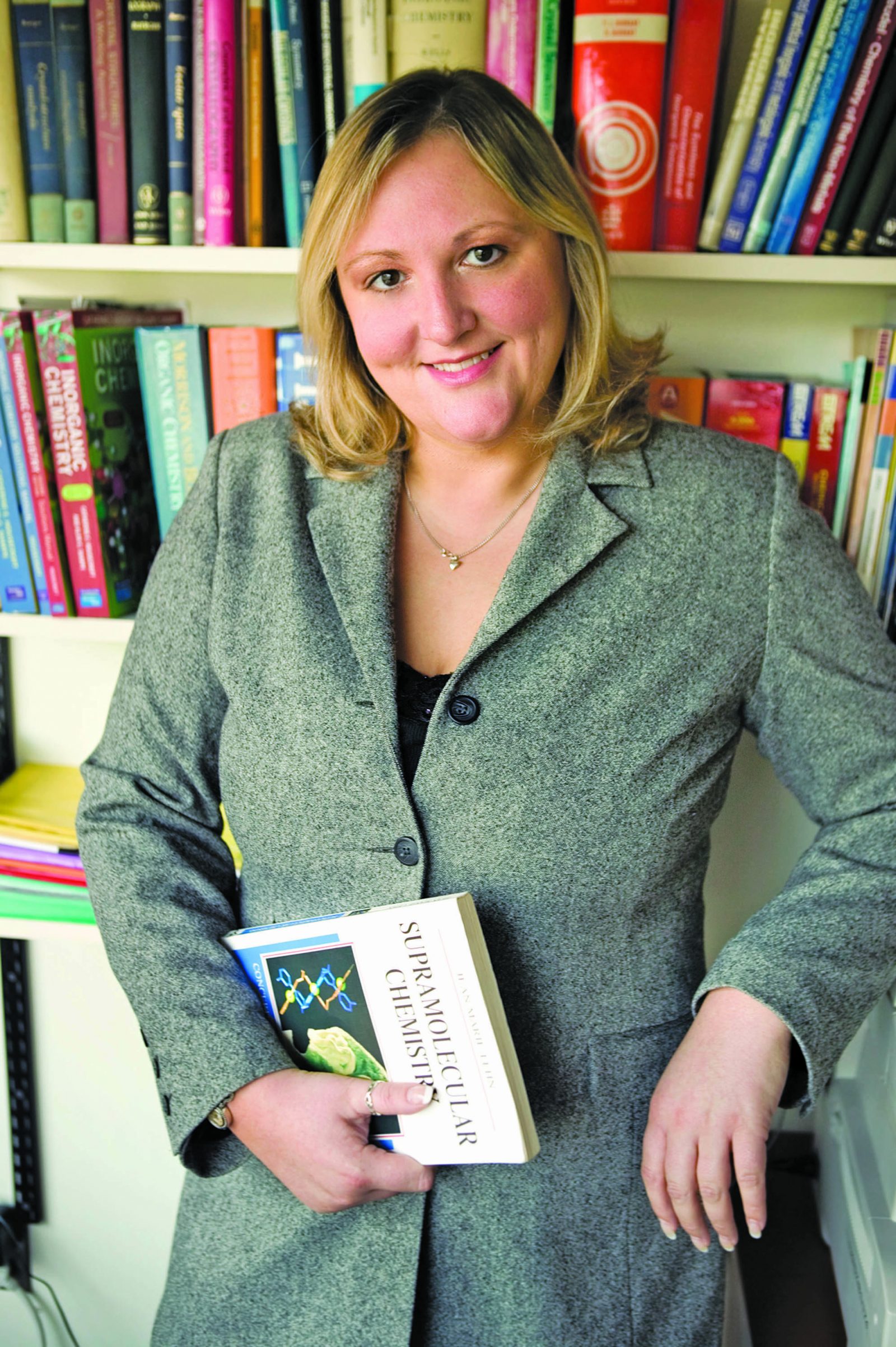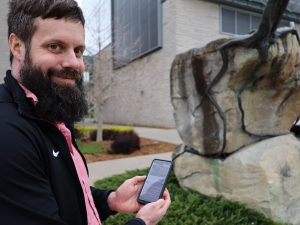The Royal Society of Chemistry, a UK-based international organization that advances excellence in the chemical sciences around the globe, recently named Brock University chemist Melanie Pilkington as a Fellow. In addition, on Wednesday, May 17, Pilkington will be representing Brock at the Parliament Hill Pop-Up Research Park, organized by Research Matters to raise the profile of university research across the province. The Brock News sat down with Pilkington to profile her research on molecule-based magnets.
If early research results are an indication, Associate Professor of Chemistry Melanie Pilkington and her group may have come up with a way to make the magnetic resonance imaging (MRI) procedure safer and more effective for Canadians.
MRI scans produce detailed images of the body’s organs and tissues through the use of a strong magnetic field and radio waves.
Patients undergoing MRI scans are typically injected with a substance called a contrast agent to make these images appear clearer so that doctors can diagnose certain diseases or evaluate injuries.
All contrast agents currently approved for use in Canada contain the magnetic ion gadolinium. In recent years, however, the U.S. Food and Drug Administration has been investigating risks associated with gadolinium ending up in patients’ brains. Patients can also experience other negative side effects after being injected with these contrast agents.
Pilkington and her group are developing a new family of MRI contrast agents that would make MRI images sharper, allowing for earlier detection of diseases such as cancer. Dosages of the new agents could also be smaller, making it safer for patients.
The key is to use a molecule known as a macrocycle that tightly encapsulates the gadolinium ion so that the ion can do its job of enhancing images in the MRI scan, but prevent it from becoming free to cause unpleasant side effects in the body.
A former student member of the Pilkington Group, Emma Gavey Stares, who has since graduated from Brock, describes the research in a 2015 Three Minute Thesis Competition presentation.
In addition to developing MRI contrast agents, Pilkington and her group are also developing a second family of magnetic compounds known as single molecule magnets.
Traditional magnets are typically large, horseshoe-shaped chunks of metal or metal oxides. In recent years, however, magnets have become small enough to fit into things such as credit cards and computer chips.
But what if magnets could be nano-sized — a dazzlingly small 0.0000001 cm? Enter the era of single molecule magnets, which opens up a whole new realm of possibilities for the next generation of computing, explains Pilkington.
“Each of these little molecules can act as an information storage device, so basically you can go hundreds of thousands of times smaller if you can make your device from these single molecules,” she says.
Such materials are no longer science fiction. Pilkington’s group, along with a team headed by Associate Professor of Chemistry Theocharis Stamatatos, are researching ways to improve single molecule magnet systems and their properties.
Specifically, they’re striving to address a huge challenge in the field.
“At the moment single molecule magnets operate at very low temperature, typically close to liquid helium temperatures (-269 oC), which means they’re not suitable for conventional technological applications,” says Pilkington. “The question we’re trying to address is how can we shift the temperature and make these molecules do what we want them to do at, or around, room temperature so that we can make commercial devices from them?”
If they succeed in this goal, the implications of single molecules magnets are tremendous, not only for data storage, but as key components in the next innovation on the horizon: quantum computers.
Conventional computers process data in the form of binary digits or ‘bits’, which are combinations of 0 and 1.
But quantum computers are far more complex. They contain ‘qubits’, which not only encode information as 0s or 1s but can also encode them as both at the same time. The idea is to use single molecule magnets as the qubits.
“The first experimental studies of quantum computing operations on qubits are now being undertaken and offer the potential to dramatically increase the processing capabilities of computers,” explains Pilkington.
“When you’re using molecular chemistry, you can tinker with the structure of the molecule by manipulating and modifying it,” she says. “You can build in additional functionalities and physical properties; you can make them do more than one thing, which is what we’re interested in.”
With her research interests in both the immediate application of her molecules to diagnostic imaging and potential future applications in quantum computing, Pilkington says it is an exciting time to be involved in science.
Pilkington will be in Ottawa Wednesday, May 17 to discuss her work during Research Matters’ annual Pop-Up Research Park.
Brock is one of 15 universities in Ontario that Research Matters invited to set up displays and be on hand to explain their research to Members of Parliament and their staff.
Research Matters is a public outreach initiative that explores how Ontario university research is transforming daily life and improving how people live, work and play across the province and around the world.










